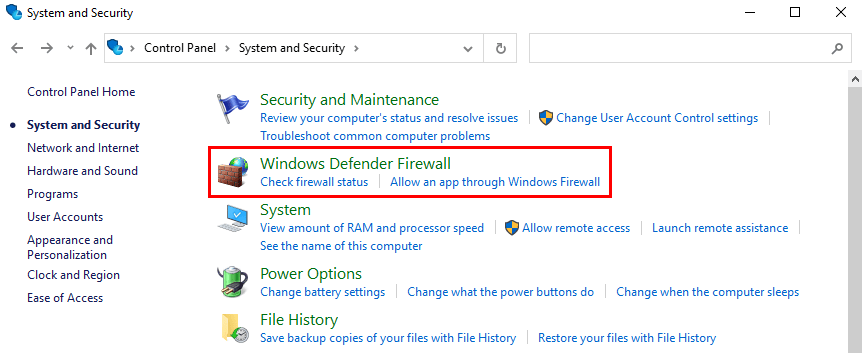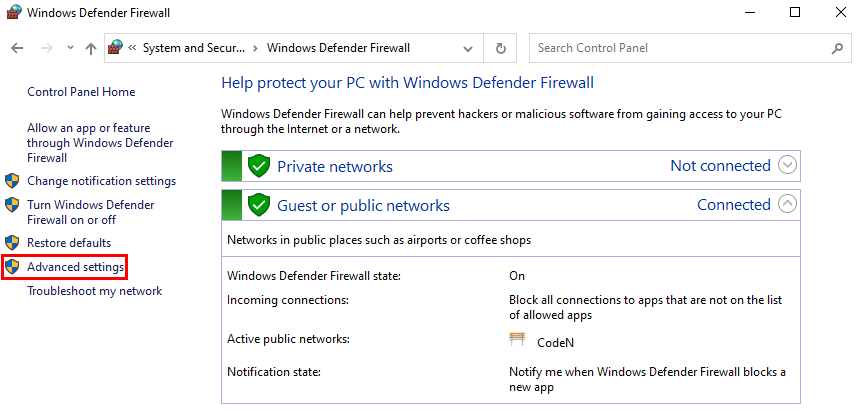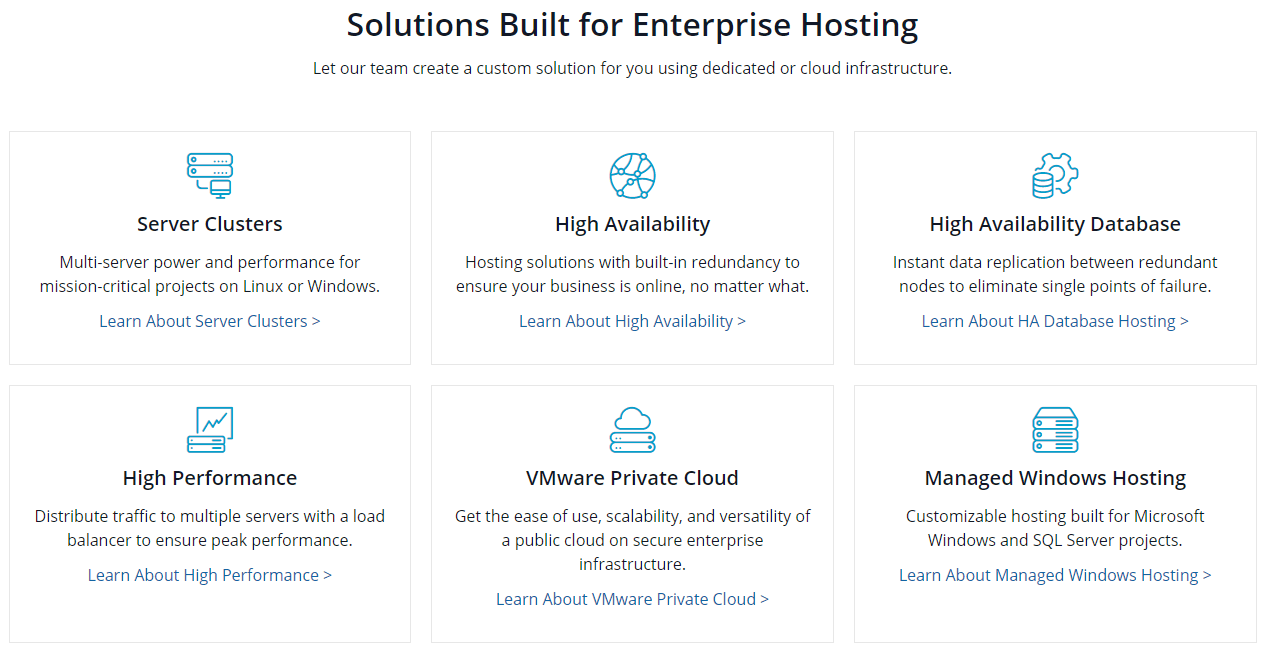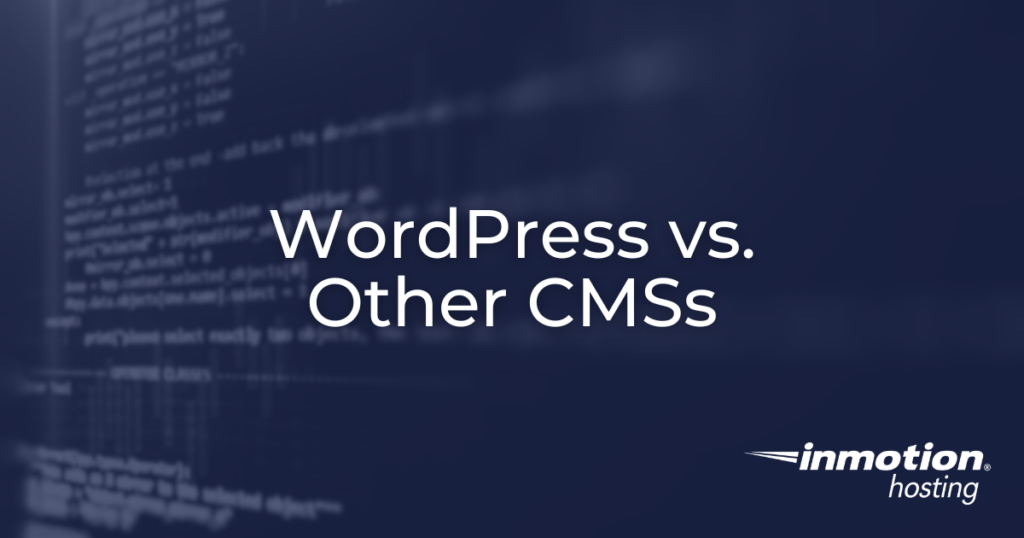Digital non-public servers (VPS) have change into an integral resolution for a lot of companies and people searching for highly effective internet hosting for varied purposes due to their flexibility, scalability, affordability, and management over server sources.
Nonetheless, sluggish efficiency and subpar safety might negatively have an effect on the total potential of your VPS. That’s why it’s important to grasp and implement efficient port administration.
Correctly configuring your ports can stop unauthorized entry, decrease vulnerabilities, and make sure that your purposes and companies run easily with out network-related points.
By the tip of this text, you may be well-equipped to take care of higher management over your server’s ports and setting to maximise safety and efficiency.
Let’s delve into the intricacies of VPS port administration!
Understanding VPS port administration
Ports are communication endpoints appearing as gateways that allow communication between totally different companies and purposes on a server. They permit gadgets to ship and obtain information, facilitating several types of community site visitors.
Think about your VPS as a bustling metropolis with quite a few buildings and institutions. Every constructing represents a particular utility or service operating in your server, comparable to an internet site, e mail server, or database. Now, consider the ports because the entrances to those buildings. To make sure the graceful functioning and safety of town, it’s essential to have a well-regulated system for managing these entrances.
Ports function by way of the Web Protocol (IP) networking mannequin. Every IP deal with has a myriad of ports obtainable, every with a novel quantity assigned to it, starting from zero to 65535, permitting for an enormous vary of potential communication channels.
Simply as a avenue deal with ensures a bundle reaches the proper constructing, an IP deal with ensures information reaches the supposed gadget, whereas the port quantity acts because the unit or condominium quantity.
By default, a VPS has sure ports open to permit for important companies like SSH (Safe Shell) or HTTP (Hypertext Switch Protocol). Nonetheless, leaving pointless ports open can pose safety dangers. That’s the place port administration comes into play.
Port administration is the method of controlling which ports are open or closed in your VPS. By selectively opening the ports for the companies you want and shutting the pointless ones, you may improve safety and scale back the assault floor of your server.
However how do we all know which ports are obligatory and which aren’t? To reply this query, we should first discover web protocol sorts and their use instances.
Completely different web protocol sorts
Two basic protocols are essential in transmitting information over the web: TCP (Transmission Management Protocol) and UDP (Person Datagram Protocol).
They’re each transport layer protocols residing within the fourth layer of the OSI (Open Techniques Interconnection) mannequin. They function the spine of community communication, permitting gadgets to alternate info reliably and effectively, however they differ of their method and traits.
Transmission Management Protocol (TCP)
TCP, also known as a connection-oriented protocol, is designed to supply a dependable and ordered information supply mechanism. It ensures that information packets are obtained by the supposed vacation spot within the right order, with none loss or duplication.
This degree of reliability is achieved by establishing a connection, generally known as the three-way handshake, between the sender and receiver. This confirms the readiness of each events and units up the mandatory parameters for information switch.
The three-way handshake permits the sender and receiver to synchronize and agree on the phrases of communication. As soon as the connection is established, TCP breaks the info into small chunks known as packets, that are then despatched bidirectionally. This ensures that the packets are delivered accurately and that any misplaced or corrupted packets are retransmitted.
Having mentioned that, TCP’s reliability comes at the price of elevated overhead and latency. The acknowledgment mechanism and the necessity for retransmission in case of packet loss or errors contribute to a extra advanced communication course of.
Nonetheless, this complexity makes TCP appropriate for purposes the place information integrity is of utmost significance, comparable to net searching, file switch, e mail communication, and any utility that requires correct information transmission.
Person Datagram Protocol (UDP)
UDP operates as a connectionless protocol. It focuses on delivering information with minimal delay and gives a best-effort supply mechanism with none reliability ensures.
It doesn’t set up a connection or carry out a handshake earlier than information switch. As a substitute, it treats every packet as an impartial entity with no inherent ordering or acknowledgment mechanism. In different phrases, it operates on a best-effort foundation, merely forwarding information packets to their vacation spot with out actively monitoring their arrival, sacrificing TCP’s reliability and error-checking capabilities in favor of pace and effectivity.
The simplicity of UDP permits it to supply decrease overhead and lowered latency, making it typically favored in conditions the place real-time communication is important, comparable to on-line gaming, voice and video streaming, DNS (Area Identify System) decision, and IoT (Web of Issues) purposes. In these situations, the precedence lies in transmitting information shortly, and occasional packet loss or out-of-order supply could also be acceptable with out compromising the general person expertise.
That being mentioned, TCP and UDP depend on ports to distinguish between totally different companies or purposes operating on a tool. When a TCP or UDP packet arrives at a tool, the vacation spot port quantity within the packet header determines which utility or service ought to obtain the info.
For instance, if an internet browser desires to retrieve a webpage utilizing TCP, it would ship a request to the server’s IP deal with and specify port 80 because the vacation spot port. Upon receiving the request, the server’s working system is aware of that port 80 is related to the HTTP service, and it’ll ahead the request to the online server operating on that port.
Having a powerful grasp of TCP and UDP paves the trail for efficient port administration, serving to us determine which ports must be opened or closed to make sure the secure and seamless circulation of data from one gadget to a different.
Frequent port blocks and their significance
Blocks assist in controlling the circulation of knowledge via particular ports. That is essential as a result of it regulates site visitors and prevents unauthorized entry or malicious actions over the web.
Web service suppliers (ISPs) take this preemptive measure to safeguard towards potential threats and preserve the integrity and confidentiality of any delicate information and knowledge transmitted. They might additionally limit entry to sure purposes or companies to adjust to authorized or regulatory necessities by blocking the ports they use.
As an example, they may block the ports generally employed by peer-to-peer file-sharing purposes to discourage customers from utilizing these companies to illegally obtain copyrighted content material to ensure a good and lawful use of their community sources.
Now, let’s check out some widespread port blocks and their significance in sustaining a safe community setting:
- Port 21 (FTP) – File Switch Protocol (FTP) is often used for transferring recordsdata over a community. Nonetheless, leaving this port unrestricted can expose techniques to potential safety dangers.
- Port 22 (SSH) – Safe Shell (SSH) is broadly used for safe distant administration of techniques. Blocking port 22, or limiting SSH entry to trusted IP addresses, provides an additional layer of safety and reduces the chance of unauthorized intrusions.
- Port 25 (SMTP) – The Easy Mail Switch Protocol (SMTP) port handles e mail transmission. Port 25 blocking is usually carried out to forestall the abuse of e mail servers for spamming functions, which will help organizations curtail the potential for unauthorized mass e mail campaigns and scale back the danger of falling sufferer to email-related safety threats.
- Port 80 (HTTP) – Port 80 is used for unencrypted net site visitors utilizing the Hypertext Switch Protocol (HTTP). Whereas it’s important for net searching, it may be an entry level for varied cyberattacks. Blocking this port will power customers to entry web sites via encrypted connections like Hypertext Switch Protocol Safe (HTTPS) on port 443, which reinforces information privateness and safety.
- Port 110 (POP3) – The Submit Workplace Protocol model 3 (POP3) port retrieves emails from a distant server. Blocking this port helps defend towards unauthorized entry to e mail accounts and prevents potential information breaches or unauthorized retrieval of delicate info. As a substitute, think about using port 995 for the Submit Workplace Protocol Three over SSL (POP3S).
- Port 143 (IMAP) – The Web Message Entry Protocol (IMAP) port is one other protocol used for e mail retrieval that’s greatest blocked. It is suggested to make use of SSl/TLS with IMAP to make sure the safety of e mail communications.
You will need to word that port blocking must be carried out judiciously, as indiscriminate blocking can hinder professional community actions and scale back productiveness. Goal to stability safety and value, guaranteeing that important ports are accessible whereas successfully blocking people who pose vital dangers.
Opening ports on a Home windows VPS firewall
There are a number of strategies to open ports on a Home windows VPS firewall that rely in your server’s configuration and the instruments obtainable. Here’s a tutorial for the 2 commonest strategies:
Technique 1: Utilizing Home windows Defender Firewall with Superior Safety
- Go to the Management Panel and click on on System and Safety.

- Click on on Home windows Defender Firewall.

- Click on on Superior settings.

- Within the left-hand pane, click on on Inbound Guidelines.

- Within the right-hand pane, click on on New Rule.

- Choose Port and click on on Subsequent.

- Select TCP or UDP because the protocol in keeping with your necessities, and enter the port quantity you want to open.

- Choose Permit the connection.

- Select the community profiles to use the rule (Area, Non-public, or Public) in keeping with your wants.

- Enter a reputation and outline for the rule, and click on End.

That’s it – the port that you simply specified ought to now be open.
Technique 2: Utilizing Command Immediate
- Open Command Immediate with administrative privileges.
- Run the next command to verify the energetic connections:
netstat -aon- Decide the firewall profile you need to modify. The obtainable profiles are Area, Non-public, and Public. Use the next netsh command to listing the obtainable profiles and their settings:
netsh advfirewall present allprofiles- Use the next command to open a port for a particular firewall profile. Exchange <PROFILE> with the specified profile title (e.g., Area, Non-public, or Public) and <PORT_NUMBER> with the precise port quantity you need to open:
netsh advfirewall firewall add rule title="Open Port <PORT_NUMBER>" dir=in motion=enable protocol=TCP localport=<PORT_NUMBER> profile=<PROFILE>For instance, if you wish to open port 8080 for the Non-public profile, your command must be as follows:
netsh advfirewall firewall add rule title="Open Port 8080" dir=in motion=enable protocol=TCP localport=8080 profile=Non-public- Affirm that the rule has been created efficiently by operating the next command, changing <PORT_NUMBER> with the port quantity you specified earlier:
netsh advfirewall firewall present rule title="Open Port <PORT_NUMBER>"Enhancing server safety with greatest practices for correct port administration and configuration
Your VPS serves as a cornerstone of your on-line presence, and any vulnerabilities can result in potential threats and compromise your helpful information. Let’s check out among the sensible actions you may take to bolster your server’s safety:
- Change default ports – Take, as an illustration, a broadly employed protocol comparable to SSH for distant entry. Altering the default SSH port, usually 22, to a non-standard port can scale back the publicity to automated assaults searching for susceptible SSH connections.
- Restrict entry by IP deal with – Permitting entry to particular ports solely from trusted IP addresses can make sure that solely approved people or techniques with predefined IP addresses can set up connections, successfully stopping malicious actors from exploiting potential vulnerabilities.
- Use safe protocols – Adopting SSL/TLS (Safe Sockets Layer/Transport Layer Safety) protocols for delicate information transmission provides one other layer of safety towards eavesdropping and tampering. They safeguard confidential info and mitigate the danger of interception.
- Implement port knocking – Port knocking is a further layer of safety that may be employed to obscure open ports from potential attackers. It provides an additional step for attackers to find the open ports, making it tougher to take advantage of vulnerabilities. This system requires a sequence of connection makes an attempt to predefined closed ports earlier than a particular port opens, granting entry to approved customers solely.
- Commonly monitor log recordsdata and replace firewall guidelines – A firewall acts as a protecting barrier, scrutinizing community site visitors and filtering out doubtlessly dangerous requests. Vigilant monitoring of logs and usually updating firewall guidelines will deal with rising threats or altering necessities.
- Set robust passwords – Weak passwords present an open invitation to hackers, enabling unauthorized entry. Through the use of a mix of uppercase and lowercase letters, numbers, and particular characters, you may create advanced passwords which are way more proof against brute-force assaults. Commonly change passwords and keep away from reusing them on totally different platforms.
- Use encryption – Using encryption algorithms can render intercepted information meaningless to unauthorized people. Implementing protocols, comparable to IPsec (Web Protocol Safety) or VPN (Digital Non-public Community), guarantee end-to-end encryption, making it exceedingly difficult for attackers to decipher delicate info.
- Monitor and analyze log recordsdata – Commonly reviewing your log recordsdata will help you notice any suspicious actions, comparable to unauthorized connection makes an attempt or uncommon site visitors patterns, early on so you may take proactive measures to mitigate dangers.
Bear in mind to tailor your configuration to satisfy your community’s necessities and make use of a defense-in-depth method. Additionally, keep away from widespread errors which may jeopardize your internet hosting setting.
Avoiding widespread errors and troubleshooting points
Not following greatest practices for port administration might have detrimental drawbacks in your VPS, comparable to:
Insufficient intrusion detection and prevention techniques (IDPS)
An IDPS will help detect and stop unauthorized entry makes an attempt and suspicious actions in your VPS. Failing to implement an efficient IDPS can go away you unaware of potential safety breaches.
Contemplate putting in an IDPS resolution that fits your wants and configure it to warn you of any suspicious conduct or potential threats.
Lack of standard backups
Backups are important for catastrophe restoration and guaranteeing enterprise continuity. Within the occasion of a safety breach or information loss, having an up-to-date and dependable backup technique that features each on-site and off-site backups can prevent from vital hassle.
Make it possible for your backups are functioning accurately and might be restored if wanted by usually testing them.
Not implementing robust community safety measures
Securing your VPS does not cease on the server degree; you additionally want to contemplate community safety. Implement measures comparable to utilizing safe protocols (e.g., SSH as an alternative of FTP), enabling community encryption (SSL/TLS), and limiting entry to your VPS by IP deal with or via a VPN.
Fixing defective port forwarding
In the event you encounter points with port forwarding in your Home windows VPS, take into account the next troubleshooting steps:
- Confirm the port standing – Make sure that the ports you want are open and obtainable to be used. You need to use port scanners, comparable to SolarWinds Port Scanner, or command-line instruments, like netstat, to confirm your ports’ standing.
- Look at application-specific settings – If the port points you’re dealing with are particular to a specific utility or service operating in your VPS, examine the applying’s configuration and the precise ports that must be open.
- Check community connectivity – Check the connectivity between your VPS and the exterior community to make sure there are not any network-related obstacles. Ping assessments (e.g., Meter), traceroute instruments (e.g., KeyCDN), and even reaching out to your internet hosting supplier’s help group will help in diagnosing any community connectivity issues.
- Verify for conflicting companies – In some instances, a number of companies could be trying to make use of the identical port, leading to conflicts. Establish if you’re utilizing two or extra apps which are using the identical port. If a battle exists, take into account reconfiguring or stopping the conflicting service or assigning an alternate port to the purposes in query.
- Search skilled help – If in case you have exhausted all troubleshooting steps and your port-related concern persists, take into account contacting your VPS internet hosting supplier’s help group. Liquid Internet has the most effective around-the-clock buyer help by way of cellphone calls or stay chats.
Evaluating VPS internet hosting plans and firewall software program choices
One important issue that immediately impacts your web site’s efficiency is the selection of a VPS internet hosting supplier. Choosing the best supplier can considerably enhance your web site’s pace, safety, and total person expertise.
The standard of service, reliability, and help can fluctuate tremendously from one supplier to a different. That’s why it’s essential to contemplate the next options when selecting the best VPS internet hosting supplier:
- Sturdy safety measures – Guaranteeing the supplier implements firewalls, intrusion detection techniques, and common safety audits to guard your server from malicious assaults is extraordinarily helpful.
- Optimum efficiency – Discover a dependable supplier with strong {hardware} sources, comparable to quick processors, ample RAM, and solid-state drives (SSDs) for enhanced pace and responsiveness, guaranteeing a clean person expertise.
- Scalability choices – Select a internet hosting firm that permits you to simply improve your plan to entry extra server sources with out disruptions as your enterprise grows.
- Glorious buyer help – Enquire if the supplier has entry to educated and immediate buyer help for troubleshooting technical points, optimizing efficiency, and addressing any issues you might have.
A number of the greatest and most notable internet hosting suppliers embody Liquid Internet, Amazon, Digital Ocean, and Rackspace.

Among the many main elements that set Liquid Internet aside from its rivals are:
- Unwavering dedication to reliability with high-availability internet hosting – Liquid Internet has invested extensively in state-of-the-art infrastructure by having world-class information facilities geared up with redundant energy techniques, superior cooling mechanisms, and a number of community carriers to make sure seamless connectivity and remove any threat of downtime.
- Preemptive safety measures – This ensures that your on-line tasks are safeguarded towards any risk. From common safety audits and firewalls to superior DDoS safety and malware scanning, Liquid Internet takes a proactive method to fortify its infrastructure.
- Lightning-fast response instances and optimized useful resource allocation – This leads to a seamless person expertise.
- Totally customizable, scalable, and versatile options – You’ll have the ability to tailor your internet hosting setting exactly to your wants. Whether or not you’re launching a small weblog, an eCommerce platform, or a large-scale enterprise web site, you’ll have the ability to seamlessly improve your internet hosting plan as your enterprise expands, avoiding any disruptions and guaranteeing a clean transition.
- Distinctive buyer help with an industry-leading buyer loyalty rating (NPS rating of 67) – Liquid Internet’s devoted group of consultants is on the market 24/7/365, offering immediate help and resolving points effectively. Whether or not you’ve got questions on server configuration, firewall settings, or normal inquiries, Liquid Internet’s help group is all the time able to resolve your server points. They’ve numerous 5-star evaluations to again their service.
Get began with Liquid Internet’s high-performance VPS options
Efficient port administration is important to forestall unauthorized entry, defend delicate information, and optimize community efficiency. Neglecting this essential facet can go away your VPS susceptible to safety breaches, leading to potential information loss, downtime, and a unfavourable impression in your on-line presence.
Liquid Internet understands the importance of VPS port administration and takes complete measures to make sure the utmost safety and management. Their internet hosting options are designed with superior firewall configurations, permitting for meticulous port monitoring, filtering, and entry management.
Moreover, Liquid Internet’s group is very expert and has intensive data and expertise in managing VPS ports. They’re geared up to deal with advanced port configurations and provide customized options tailor-made to your particular necessities.
Liquid Internet’s proactive method to VPS port administration means potential vulnerabilities are recognized and addressed swiftly, minimizing potential dangers to your on-line belongings.


